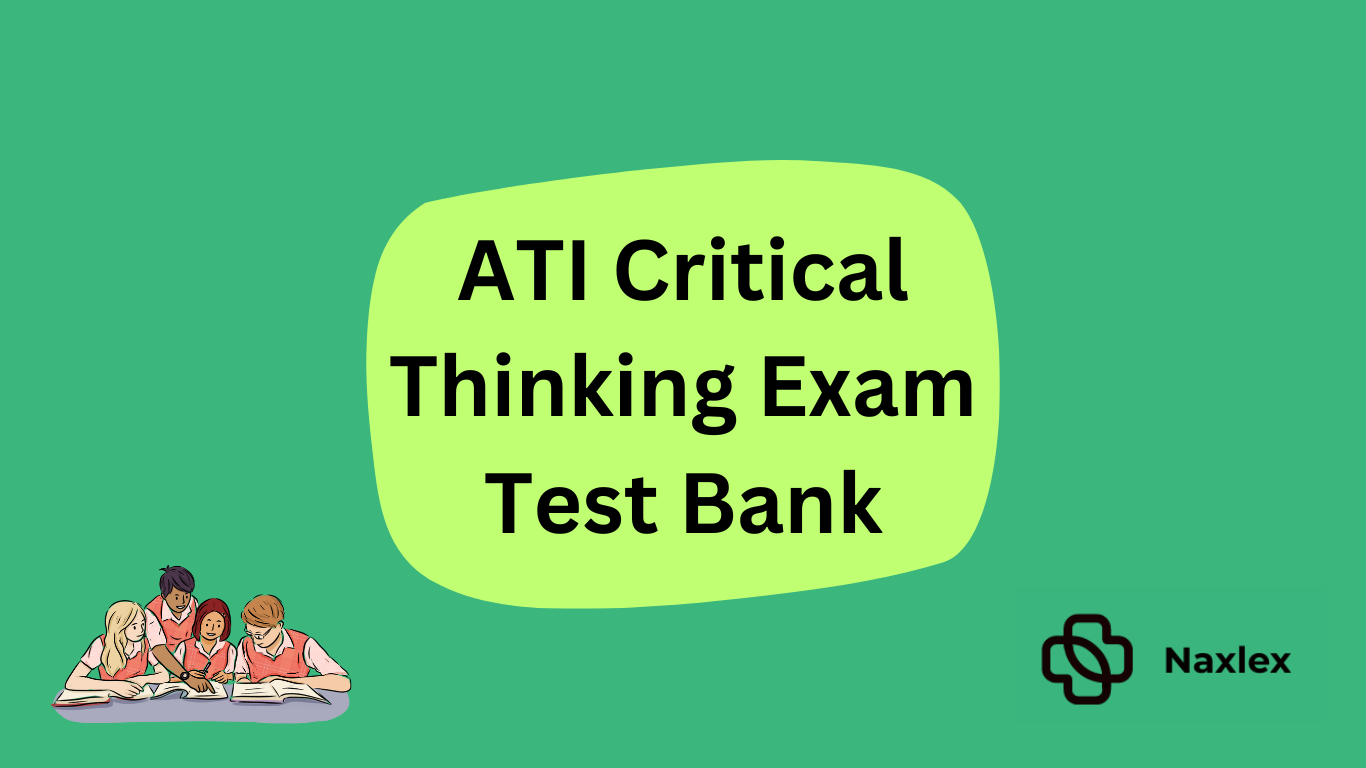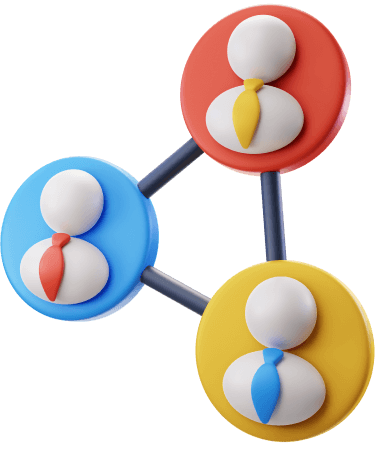ATI Critical Thinking Exit Exam Test Bank
ATI critical thinking exit exam test bank are questions that trigger thoughtful analysis. You should assess information and propositions by applying various cognitive abilities to arrive at well-founded, rational, and consistent conclusions within a specific context.
Rather than passively accepting assertions and final thoughts, you must have robust critical thinking skills to engage in questioning and examining the provided evidence. To pass this exam, you must seek logical associations among concepts, explore alternative explanations, and gauge the persuasiveness of presented arguments.
Try Naxlex Nursing!
Unlock your Critical Thinking Potential

Elevate your critical thinking skills for the ATI exit exam with Naxlex Nursing's unparalleled test bank! We offer over 900,000 critical thinking practice questions, ensuring you're well-prepared. Our expert tutors regularly refresh the test bank, providing a fresh learning experience. Naxlex offers you practice tests, study guides and flashcards to prepare for your ATI Exit Exam. Don't wait until the last minute. Prepare for your ATI exit early and avoid the last-hour rush.
Find Out More: Blog - How Hard is the HESI Exam?
Nursing Test Banks
Comprehensive Predictor Exams
What's in the ATI Critical Thinking Exit Exam?
A critical thinking exam presents a paragraph of information setting a scenario in the medical field. You're supposed to determine if the information is truthful from the statement. There are four ways the examiner tests your critical thinking;
Assumption:
In this scenario, the examiner wants you to evaluate the statement and conclude if the assumption is present. It's up to you to determine if the information provided has an assumption.
Example question: When administering medications, which statement is true regarding the "Five Rights" of medication administration?
a) Right patient means any patient who requests medication.
b) The right route ensures that the medication is administered as quickly as possible.
c) The right dose requires giving the highest possible dose to ensure effectiveness.
d) None of the options are correct.
Answer: (d) None of the options are correct.
Inference:
In the inference question, the examiner will present various inferences, and you will be asked to mention if the inferences are possibly true, absolutely true, possibly false, or absolutely false.
Question Example: When providing care to a patient, which statement regarding hand hygiene is true?
a) Hand hygiene is necessary only after direct contact with body fluids.
b) Hand hygiene should be performed before and after every patient interaction.
c) Hand hygiene can be skipped if gloves are worn.
d) Hand hygiene is primarily the responsibility of the nursing assistants.
Answer: b) Hand hygiene should be performed before and after every patient interaction.
Interpretation:
In this question type, the examiner asks you to interpret the passage in your own words and come up with a possible conclusion. You need to understand the information and create a conclusion based on the interpretation question.
Example Question: You are assessing a patient with a strict fluid restriction due to a medical condition. Upon reviewing the patient's intake and output records, you notice that the recorded fluid intake exceeds the prescribed limit consistently. What could be the possible reasons for this situation, and how should a nurse interpret and address it?
a) The patient is not adhering to the fluid restriction and is consuming liquids covertly.
b) Errors in recording or miscalculations in measuring the patient's fluid intake.
c) The healthcare provider has changed the patient's fluid restriction, but the records were not updated.
d) The patient's condition has worsened, requiring a relaxation of the fluid restriction.
e) The nursing staff intentionally provides additional fluids to improve patient comfort.
Correct Answer: The correct answer may vary based on the specific scenario and information available. However, a) The patient is not adhering to the fluid restriction and consuming liquids covertly, and b) Errors in recording or miscalculations in measuring the patient's fluid intake.
Analysis argument:
In such questions, you're presented with an argument, and you will determine if it's weak or strong. The argument that relates to a certain scenario is strong but weak if not directed.
Example Question:
In modern healthcare, the nurse's role has evolved significantly, with an increasing emphasis on technology and complex medical interventions. Analyze the following statement: "While technological advancements have undoubtedly improved patient care, they have also raised ethical concerns and potentially reduced the focus on holistic patient-centered care in nursing practice." Provide a well-structured argument supporting or refuting this statement, considering the ethical implications and the balance between technology and human touch in nursing.
Conclusion
Supercharge your critical thinking ATI exit exam preparation with Naxlex Nursing's extensive critical thinking test bank. Boasting a whopping 8,000+ questions, you'll never run out of practice. Our dedicated tutors constantly update the bank, guaranteeing a dynamic learning journey.
Explore our comprehensive offerings, including flashcards and study guides, at a reasonable price. Take charge of your success using Naxlex nursing study materials today and pass the ATI critical thinking exit exam. Contact Naxlex Nursing now.
Naxlex NursingPass on the first time!
Struggling to pass the Nursing exam?
With questions that are almost 90% similar to actual
exams
you will be guaranteed to
pass it on first try .

FAQs
If you use the Nursing test guide PDF, you will enjoy features like:
Images
for effective visual learning
Summarized detailed topics
Quick
reading with footnotes
Questions to help you study through
trial and error
Get
ready for the Nursing with confidence
